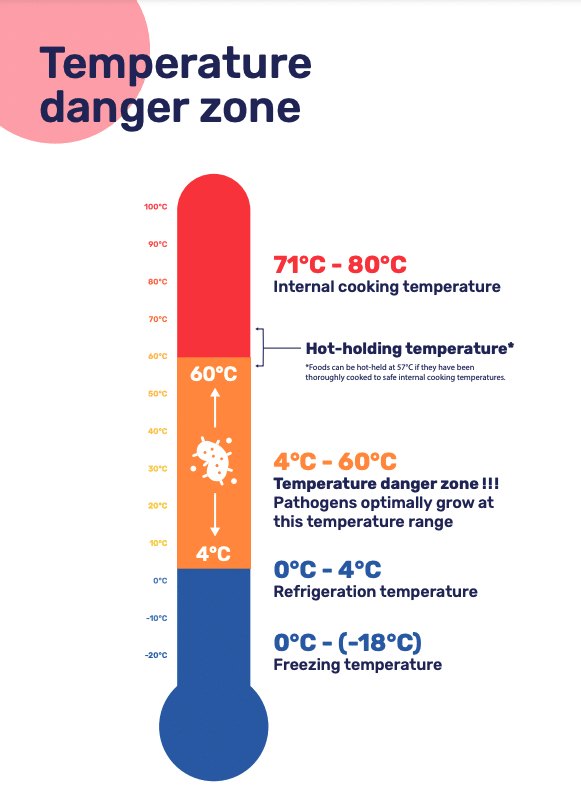Handling food in a proper way is essential for keeping public health and shelf life.
Both internal and external factors may affect a product’s safety and shelf life. The internal factors impacting products include the nature and quality of the raw materials, product formulation (including the use of preservatives), product structure (i.e., moisture and flavors will migrate between layers), oxygen availability, and redox potential within the food.
External factors are the processes applied to the food, the cooling methods, type of packaging, storage temperature (i.e., ambient, chilled, or frozen), and conditions during distribution, storage, retail display, and storage by the consumer.
But how should one know whether food ingredient seeds and plants, food in the process, or food as finished goods are being handled and stored at the right temperature?
The temperature danger zone refers to a temperature range in which bacteria grow and thrive.
According to the USDA, the Temperature Danger Zone (TDZ) is the temperature range in which most pathogenic bacteria can grow in High-Risk food (4oC – 60 °C / 40°F – 140°F).
Bacteria can double in number within this temperature range in just 20 minutes.
That’s why it’s important to keep food below or above the temperatures at which bacteria can grow.
Pathogenic bacteria and the Danger Zone:
1- Freezing temperatures (18°C or Below) Bacteria stop growing
2- Cold storage temperatures (5°C or Below) Most bacteria stop growing
3- The Temperatures Danger Zone (4-60°C) Bacteria grow quickly
4- Hot holding temperatures (60°C or above) Bacteria stop growing
5- Cooking temperatures (70°C and above) Bacteria are killed

Food safety precautions:
Cook food at safe indoor food temperatures and safe cooking temperatures recommended in the form shown.
Use a food thermometer to check that hot foods are kept hot.
Keep cooked food hot at (60°C) or higher.
Reheat cooked food to (75°C).
Never let the temperature drop below (60°C).
Do not leave food outside at room temperature for more than 2 hours.
Keep chilled foods cold; store food in the fridge (4°C), freezer (-18°C) or less.
Fourtec’s temperature monitoring products enable a vast monitoring range and assist the food & food processing industry in maintaining the suitable temperature during all stages of product preparation, storage, and shipping.

